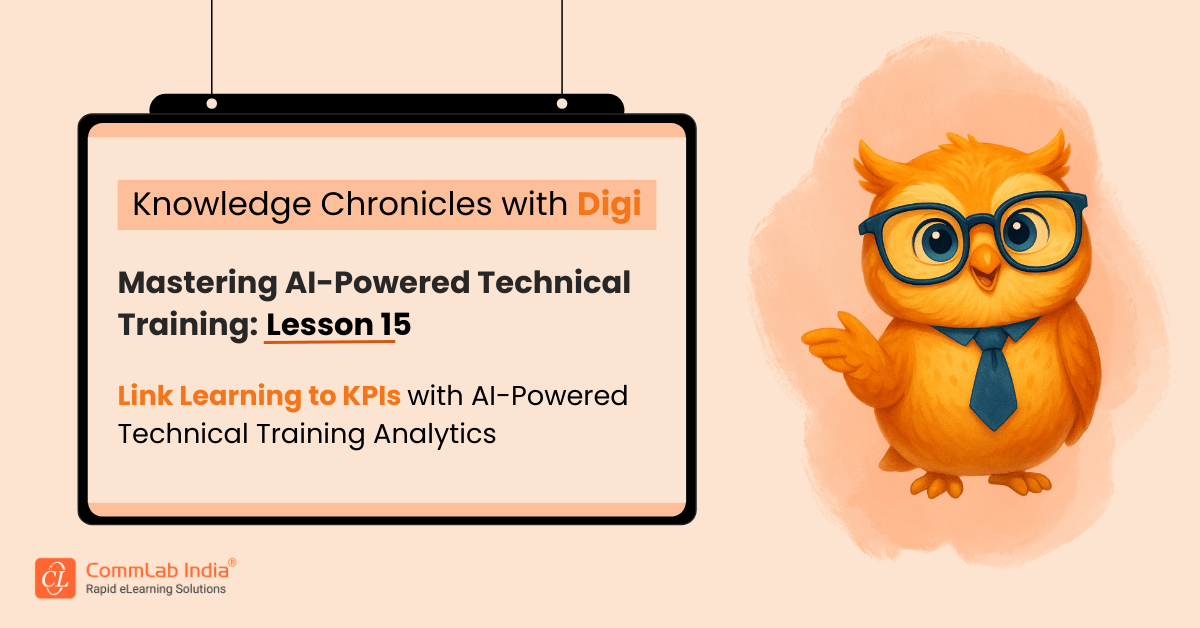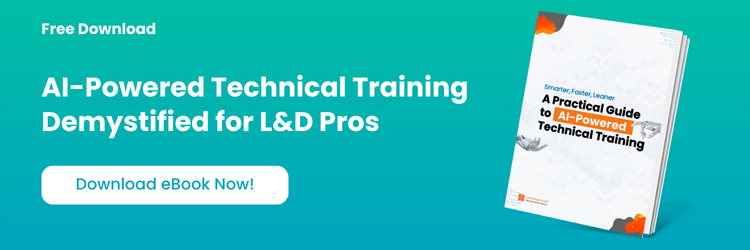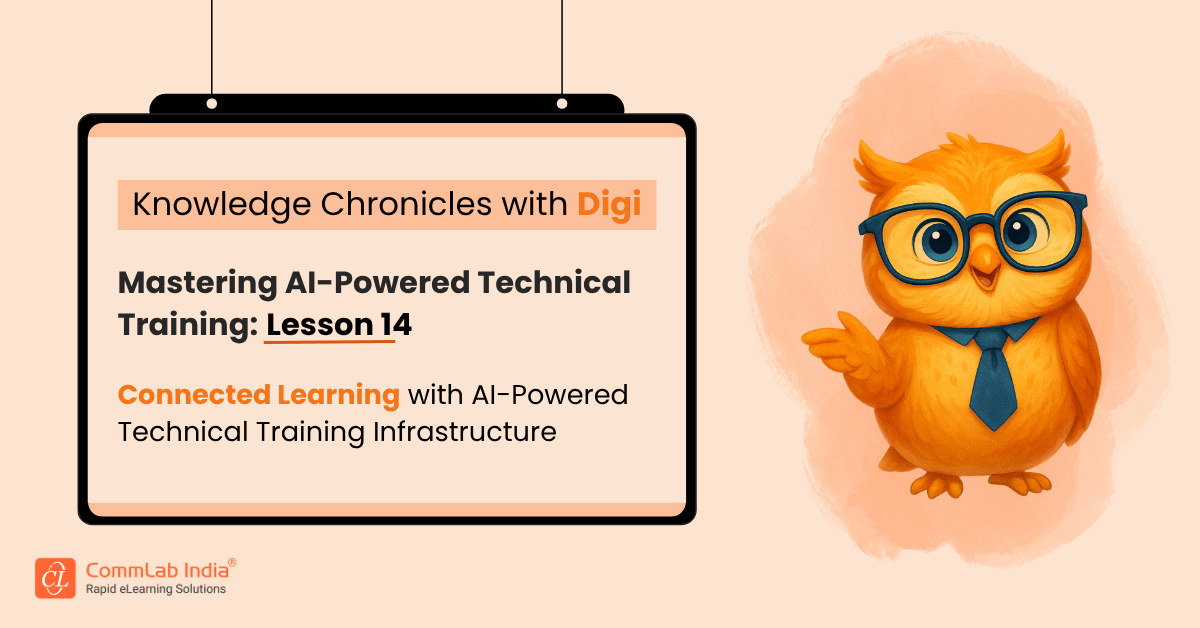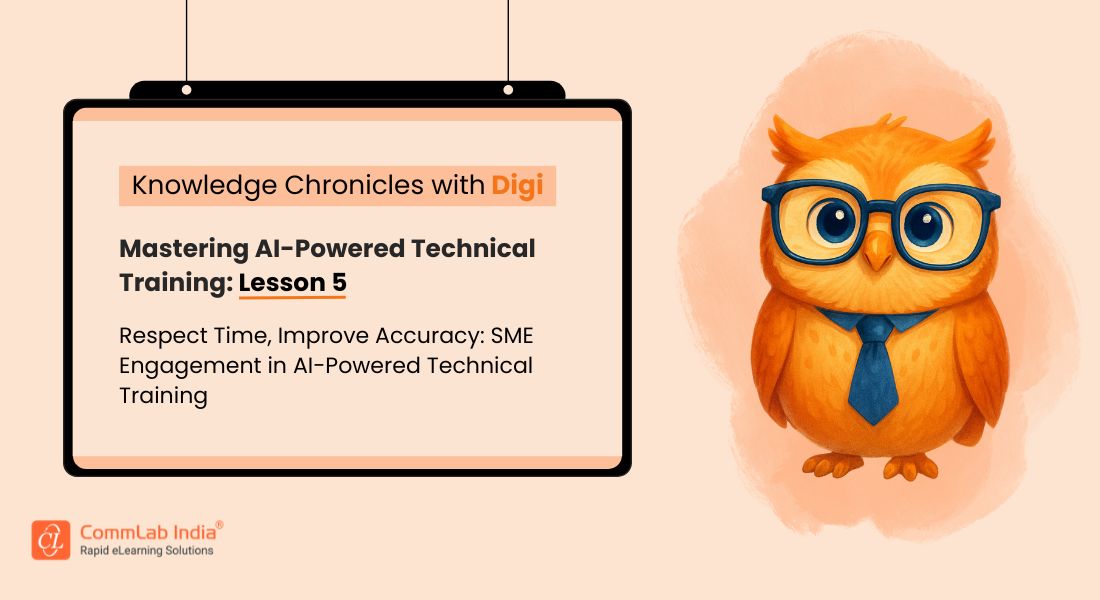In a world of tightening budgets and rising expectations, Learning & Development (L&D) leaders are under pressure to prove one thing: return on investment. No longer is it enough to say, “We trained 1,000 reps.” The real question is, did it move the needle?
For sales and service training, this means drawing a clear, data-backed line between learning interventions and performance metrics like:
- Time to productivity
- Customer satisfaction (CSAT)
- First-time fix rates
- Conversion rates
- Revenue per rep
Download eBook: AI-Powered Technical Training
Traditionally, connecting training to KPIs has been difficult—data is scattered, cause and effect are fuzzy, and learning systems haven’t played well with business analytics tools.
But AI is changing that.

Table Of Content
- Why is Proving ROI in Technical Training Hard?
- How AI Builds the Bridge?
- Case Study: Telecom Field Service Enablement
- How to Start Linking Training to KPIs?
Why is Proving ROI in Technical Training Hard?
Let’s start with the challenges:
- Lack of outcome data: Most LMS platforms track completions, not behavior or impact.
- Disconnected systems: Sales data lives in CRM, service data in ticketing tools, learning data in a silo.
- One-size-fits-all metrics: Everyone gets the same training regardless of skill gaps or business goals.
- Delayed impact: It’s hard to attribute improvement months later to a single course.

How AI Builds the Bridge?
AI changes the game by acting as the integrator and interpreter between learning and performance. Here's how:
1. Automated Skill Gap Detection
AI tools can analyze:
- Assessment results
- Simulation performance
- Behavior in real-world systems (e.g., CRM, service platforms)
From this, they can detect who needs what—and how urgently.
Example: AI flags that reps in Region B consistently fail in objection-handling scenarios. A microlearning path is triggered for them automatically.
Discover how AI tools are transforming corporate training by making learning faster, smarter, and more personalized for today’s workforce.
2. Adaptive Learning Pathways
Instead of pushing generic content, AI curates learning experiences based on:
- Role and geography
- Performance history
- Predicted future tasks
Result: Learners spend time only on what matters. Technical training becomes lean and targeted, improving speed to competency.
3. Training-to-Performance Correlation
AI-powered analytics tools (like Docebo’s Learning Impact, EdCast Insights, or custom dashboards with Power BI + LRS data) can correlate learning activity with business KPIs.
Example:
- Region A completed a reinforcement training on product demos
- CRM shows a 12% increase in close rates for that product
- AI surfaces this pattern for leadership review
4. Predictive Analytics
Once trained on historical data, AI models can:
- Forecast sales/service outcomes based on training coverage
- Identify which content assets contribute most to performance gains
- Prioritize learning interventions for maximum ROI
This means L&D can focus resources where they’ll have the biggest business impact.
5. Real-Time Dashboards for Stakeholders
AI helps generate clean, real-time dashboards that:
- Show who trained, how well, and what happened next
- Visualize the correlation between training and CSAT, service resolution, or revenue
- Surface anomalies (e.g., trained but not performing; performing but not trained)
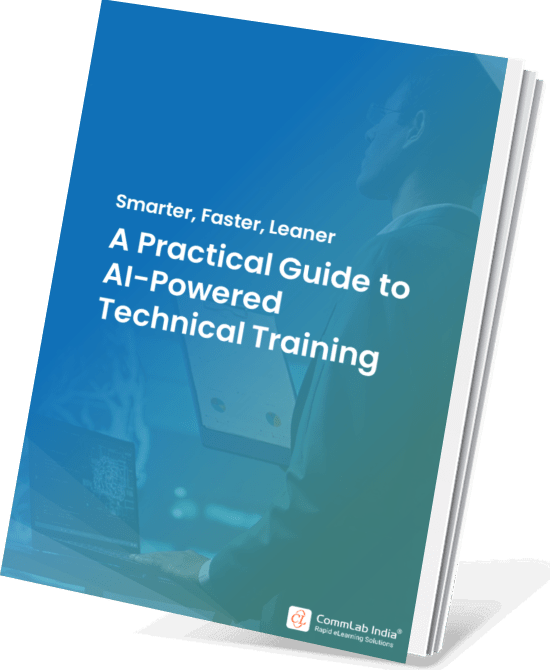
AI-Powered Technical Training – A Practical Guide
- Training formats that work best for technical learners
- 3-touchpoint model for seamless collaboration with SMEs
- Practical tools and templates
- And More!
Case Study: Telecom Field Service Enablement
A telecom company with 1,200+ service engineers used AI-powered learning and analytics to track the ROI of a troubleshooting certification program.
Here’s what they did:
- Delivered adaptive simulations via AI tools
- Integrated learning data with service logs and ticket resolution systems
- Used an LRS + Power BI dashboard to visualize connections
Results:
- First-time fix rates improved by 22% in 60 days
- Repeat calls dropped by 30%
- Customer satisfaction in post-service surveys rose by 18%
- Training costs remained flat, but ROI was 3x higher than past programs
How to Start Linking Training to KPIs?
- Define the KPI before designing the course: Don’t create training and then ask what it solved. Start with the problem.
- Instrument your learning assets: Use xAPI to track granular activity. Capture behaviors, not just completions.
- Tag content to business outcomes: Label your modules with the KPIs they aim to influence.
- Integrate systems: Use APIs or AI middleware to connect LMS, CRM, helpdesk, and analytics tools.
- Visualize, refine, repeat: Use dashboards to track impact. Use patterns to iterate.
Final Thought
Training doesn’t exist in a vacuum. It either drives business performance—or it’s just noise.
AI gives L&D teams the power to stop guessing and start measuring. It bridges the gap between the learning experience and what the business actually cares about.
When you can show that technical training improved resolution time, increased win rates, or reduced escalations, you don’t just earn credibility.
You earn a seat at the table.
And with AI, proving ROI isn’t a luxury. It’s an expectation L&D can finally meet—with confidence, speed, and clarity.

